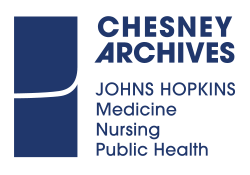Chester F. Reather Collection
Collection Overview
Creator: Reather, Chester, 1906-1993
Collection Date: 1928-1993
Extent: 2 boxes
Biography
Chester F. Reather was born in Baltimore, Maryland. He started began his career in medical photography at the Baltimore-based Carnegie Institute Institution of Washington Department of Embryology in 1935, assisting embryo modeler Osbourne Heard. Reather set the standards for photomicroscopy and his photos of human embryos known as “developmental horizons” were published in the 1940’s issues of “Life” and “Look” magazines, and in George Streeter’s textbook, “Contributions to Embryology of the Carnegie Institution of Washington”. Reather was hired by the Johns Hopkins University School of Medicine in 1950 to establish a program in biological photography within the Department of Art as Applied to Medicine. The two- year training program produced graduates that went on to establish their own photography departments at Hopkins and other institutions. Reather retired officially from Johns Hopkins in 1971, but continued to collaborate with Johns Hopkins faculty such as with George Nager in the publication of the textbook, “Pathology of the Ear and Temporal Bone”. Reather was a charter member and fellow of the Biological Photographic Association and received the organization’s Louis Schmidt Award in 1976. To honor the outstanding contributions of Reather in the field of biological photography, colleagues established the Chester Reather Scholarship in the Department of Art as Applied to Medicine to support a second year graduate student for research and creative use of new imaging technologies.
Scope and Content
The Chester F. Reather Collection consists of family photographs and biological images produced during his career. The collection includes many images of the developmental stages of the human embryo made during Reather’s work with The Carnegie Institute of Washington located on the Johns Hopkins University campus. There is also correspondence initiated by William Zinkham after Reather’s death to establish an endowment fund in Reather’s memory.
